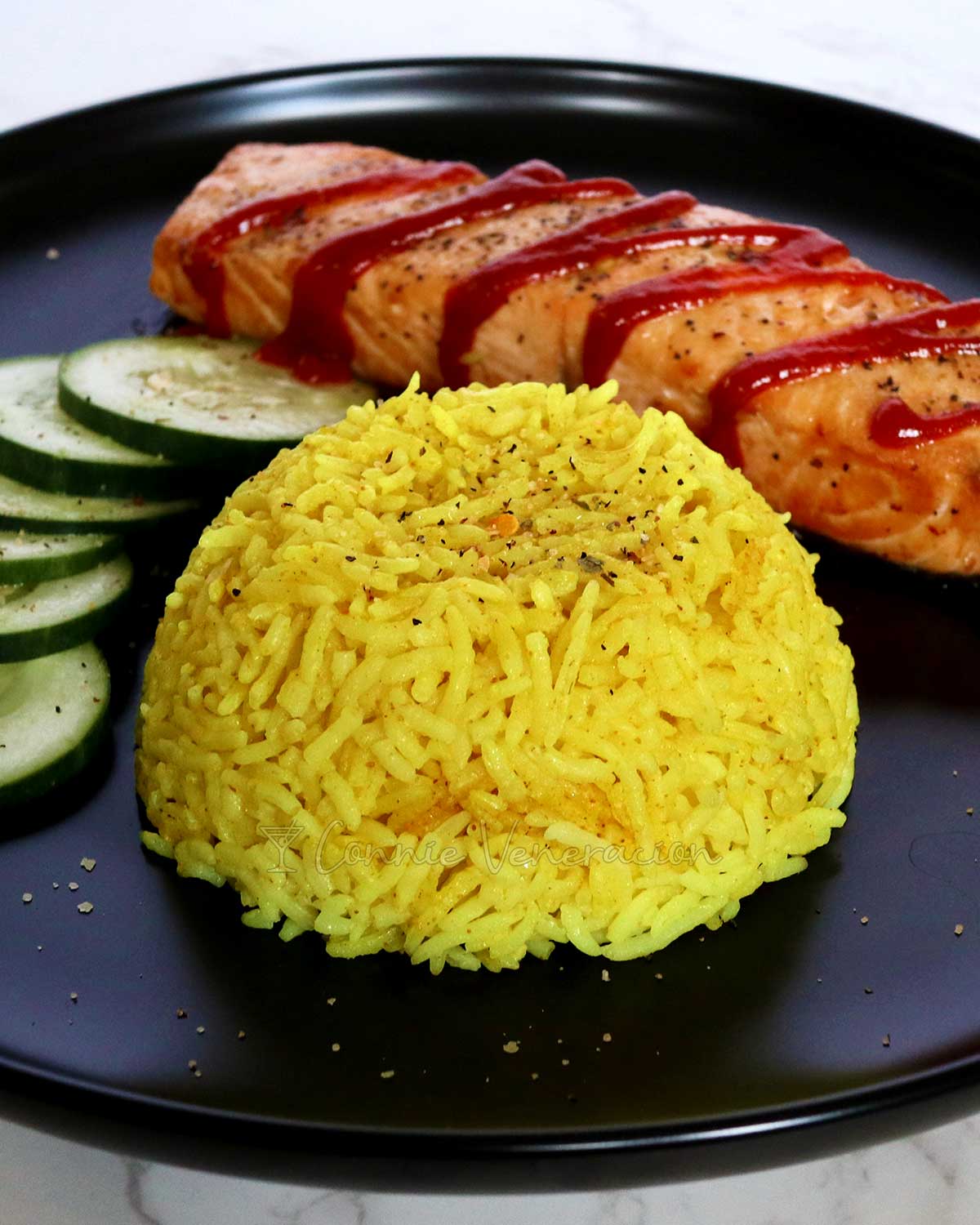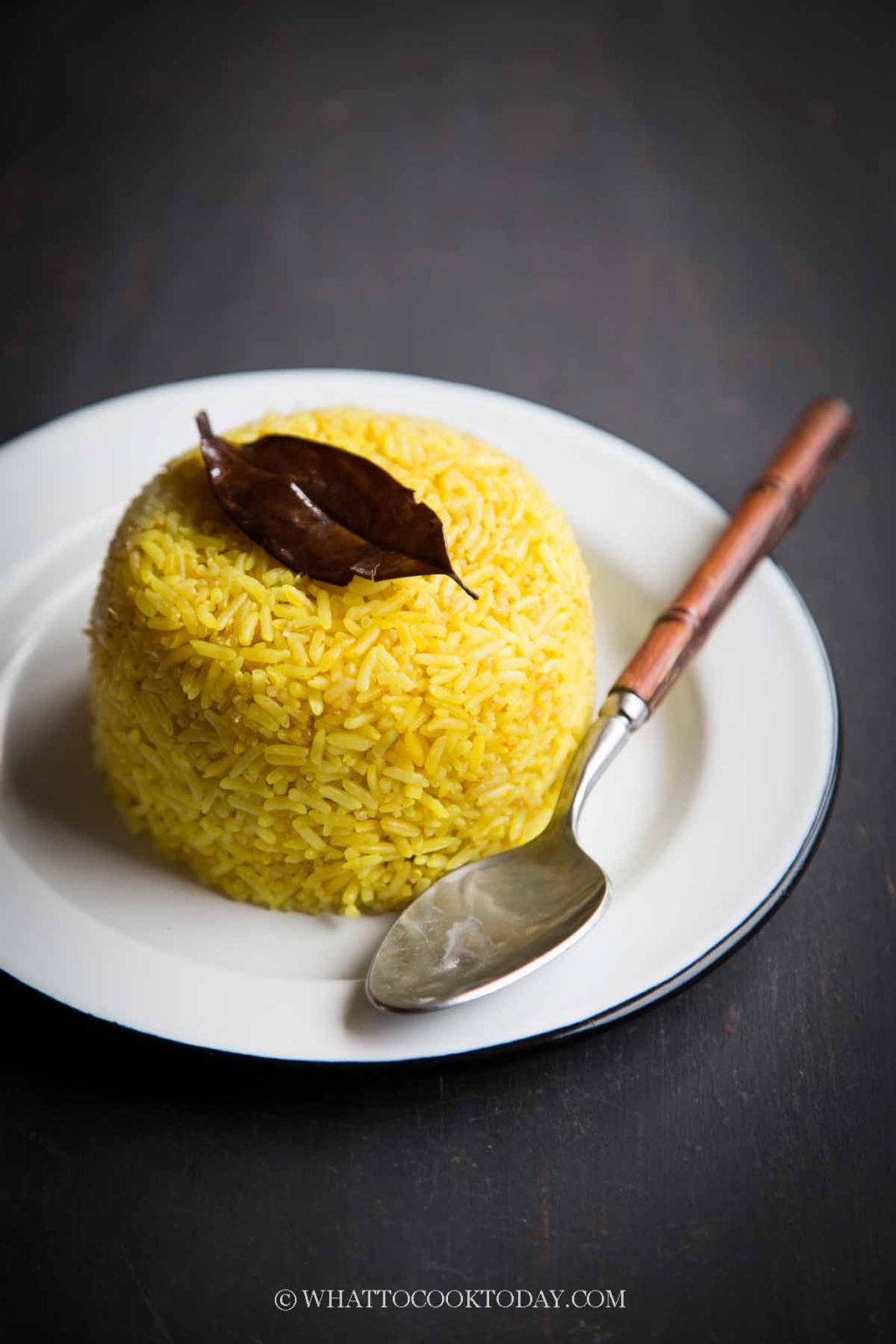A Journey Through the Golden Rice: Exploring the Depth of Nasi Kuning
Related Articles
- The Samosa: A Culinary Journey Through Time And Taste
- A Journey Through Flavor: Exploring The Depths Of Baba Ganoush (Timur Tengah)
- A Bite Of The Andes: The Story Of Ceviche, Peru’s National Treasure
- A Deep Dive Into Falafel: From Humble Beginnings To Culinary Star
- A Journey Through Tandoori Chicken: From Humble Origins To Modern Masterpieces
Introduction
Welcome to our in-depth look at A Journey Through the Golden Rice: Exploring the Depth of Nasi Kuning
A Journey Through the Golden Rice: Exploring the Depth of Nasi Kuning

Nasi Kuning, the iconic yellow rice of Indonesia, is more than just a dish. It’s a celebration of flavors, a testament to culinary artistry, and a symbol of tradition that resonates across generations. This article dives deep into the heart of Nasi Kuning, unraveling its history, exploring its diverse variations, and guiding you through the steps to creating your own perfect plate.
A Culinary Tapestry: Unveiling the Origins of Nasi Kuning
The origins of Nasi Kuning are as colorful as its vibrant yellow hue. While the exact birthplace remains shrouded in mystery, historical records point to its presence in Indonesia as early as the 15th century. The dish likely emerged from the confluence of cultural influences – the rich culinary traditions of the archipelago, the impact of trade routes, and the introduction of turmeric, a spice that imbued the rice with its signature golden color.
The historical significance of Nasi Kuning is undeniable. It has been a staple at royal ceremonies, religious celebrations, and everyday meals, signifying prosperity, joy, and togetherness. This versatility reflects the adaptable nature of Indonesian cuisine, where flavors and traditions blend seamlessly, creating a unique culinary tapestry.
The Essence of Yellow: Understanding the Key Ingredients
Nasi Kuning’s vibrant color is a testament to the power of turmeric. This golden spice, a cornerstone of Indonesian cuisine, adds not only color but also a subtle earthy flavor and a wealth of health benefits. The turmeric is typically infused into the rice by simmering it in a fragrant broth, often enriched with lemongrass, kaffir lime leaves, and galangal. This process creates a harmonious blend of aromas that permeates the rice, awakening the senses.
The richness of Nasi Kuning is further amplified by the addition of coconut milk. This creamy ingredient, a mainstay in Southeast Asian cooking, adds a subtle sweetness and a velvety texture that elevates the dish to new heights. The coconut milk also helps to bind the flavors, creating a cohesive and satisfying experience.
Beyond the Basics: Exploring the Variations of Nasi Kuning
While the fundamental elements of Nasi Kuning remain consistent, its variations are as diverse as the islands that make up Indonesia. Each region has its own interpretation of the dish, reflecting local ingredients, culinary traditions, and cultural preferences.
1. Nasi Kuning with a Spicy Kick: In regions known for their love of spice, Nasi Kuning is often accompanied by sambal, a fiery chili paste that adds a kick to the otherwise gentle flavors. This sambal can be made with various chili peppers, garlic, shallots, and other spices, creating a symphony of heat and flavor that tantalizes the taste buds.

2. Nasi Kuning with a Seafood Twist: Coastal regions have embraced Nasi Kuning with a seafood twist. Dishes like Nasi Kuning Ikan Tongkol (tuna) or Nasi Kuning Udang (shrimp) showcase the bounty of the ocean, adding a fresh and vibrant touch to the traditional rice.
3. Nasi Kuning with a Vegetarian Delight: For those seeking a vegetarian option, Nasi Kuning can be transformed into a plant-based masterpiece. The rice is often paired with tempeh, a fermented soybean product that adds a nutty flavor and a satisfying texture. Vegetables like spinach, beans, and tofu are also common additions, creating a colorful and nutritious meal.
The Art of Assembling a Nasi Kuning Feast
The beauty of Nasi Kuning lies not just in its rice but also in the accompanying dishes that elevate it to a complete culinary experience. These side dishes, often referred to as "lauk pauk" in Indonesian, are carefully curated to complement the rice and create a harmonious balance of flavors and textures.
1. The Protein Powerhouse: Nasi Kuning is often served with a protein source, ranging from classic Indonesian favorites like ayam goreng (fried chicken) and rendang (slow-cooked beef) to more contemporary options like grilled fish or tofu. The protein adds a satisfying element to the meal, providing essential nutrients and a satisfying crunch.
2. The Vegetable Symphony: To add a touch of freshness and color, Nasi Kuning is typically accompanied by a variety of vegetables. Some popular choices include acar (pickled vegetables), sayur lodeh (vegetable curry), and tumis (stir-fried vegetables). These dishes not only enhance the visual appeal but also provide a burst of flavor and dietary fiber.
3. The Flavor Enhancers: No Nasi Kuning feast is complete without a selection of flavor enhancers. These can range from sweet and savory dishes like sambal goreng (spicy vegetable stew) and perkedel (potato croquettes) to refreshing and tangy options like kerupuk (crackers) and gado-gado (vegetable salad with peanut sauce).
Embarking on Your Culinary Journey: A Step-by-Step Guide to Making Nasi Kuning
Now that you’ve been introduced to the world of Nasi Kuning, it’s time to embark on your own culinary journey. This step-by-step guide will equip you with the skills and knowledge to create your own perfect plate of golden rice.
Ingredients:
- 1 cup white rice
- 1 inch turmeric, grated
- 1 stalk lemongrass, bruised
- 2 kaffir lime leaves
- 1 inch galangal, sliced
- 1 cup coconut milk
- 1 teaspoon salt
- Water

Instructions:
1. Prepare the Rice: Rinse the rice thoroughly until the water runs clear. Soak the rice in fresh water for 30 minutes. This step helps to soften the rice and ensure even cooking.
2. Infuse the Flavor: In a saucepan, combine the turmeric, lemongrass, kaffir lime leaves, galangal, coconut milk, and salt. Add enough water to cover the rice by about an inch. Bring the mixture to a boil, then reduce heat to low and simmer for 10 minutes.
3. Cook the Rice: Add the soaked rice to the saucepan. Stir gently to ensure even distribution of the flavorful broth. Cover the saucepan and cook over low heat for 15-20 minutes, or until the rice is tender and has absorbed all the liquid.
4. Rest and Fluff: Once the rice is cooked, remove the saucepan from heat and let it rest for 10 minutes. This allows the rice to steam and absorb any remaining liquid. Fluff the rice with a fork to separate the grains.
5. Assemble Your Feast: Serve the Nasi Kuning hot, garnished with chopped shallots, fried onions, or a sprinkle of chopped cilantro. Accompany the rice with your favorite side dishes, such as ayam goreng, rendang, acar, or sayur lodeh.
Tips for Culinary Perfection:
- For a more intense turmeric flavor, use fresh turmeric root instead of powdered turmeric.
- Experiment with different types of rice, such as jasmine rice or basmati rice, to find your preferred texture and flavor.
- To enhance the aroma of the rice, add a pinch of ground cardamom or cloves to the simmering broth.
- For a richer coconut flavor, use full-fat coconut milk.
- Don’t be afraid to adjust the amount of salt to your taste.
- To prevent the rice from sticking, use a non-stick saucepan or add a small amount of oil to the rice while cooking.
- For a more visually appealing presentation, arrange the Nasi Kuning in a bowl or plate, creating a colorful and inviting centerpiece.
Beyond the Plate: Exploring the Cultural Significance of Nasi Kuning
Nasi Kuning is more than just a delicious dish. It’s a symbol of Indonesian culture, woven into the fabric of everyday life and special occasions. The dish embodies the spirit of togetherness, hospitality, and celebration.
1. A Culinary Canvas for Celebration: Nasi Kuning is a staple at various celebrations, from weddings and birthdays to religious festivals and community gatherings. The vibrant yellow color symbolizes joy and prosperity, making it an auspicious choice for special occasions.
2. A Culinary Link to Tradition: Nasi Kuning is a bridge between generations, passed down through families and communities, preserving culinary traditions and fostering a sense of cultural identity. The dish’s enduring popularity reflects its ability to connect people across time and space.
3. A Culinary Symbol of Unity: In a country as diverse as Indonesia, Nasi Kuning serves as a unifying force, transcending regional and ethnic boundaries. The dish brings people together around a shared table, fostering a sense of community and shared heritage.
Embracing the Culinary Journey: A Final Word on Nasi Kuning
As you delve deeper into the world of Nasi Kuning, you’ll discover that it’s more than just a recipe. It’s a journey of flavors, a celebration of tradition, and a testament to the culinary artistry of Indonesia. Whether you’re a seasoned chef or a novice cook, the journey of creating and enjoying Nasi Kuning is a rewarding experience that will leave you with a newfound appreciation for the richness and diversity of Indonesian cuisine.
Closure
Thank you for reading! Stay with us for more insights on A Journey Through the Golden Rice: Exploring the Depth of Nasi Kuning.
Don’t forget to check back for the latest news and updates on A Journey Through the Golden Rice: Exploring the Depth of Nasi Kuning!
We’d love to hear your thoughts about A Journey Through the Golden Rice: Exploring the Depth of Nasi Kuning—leave your comments below!
Keep visiting our website for the latest trends and reviews.







